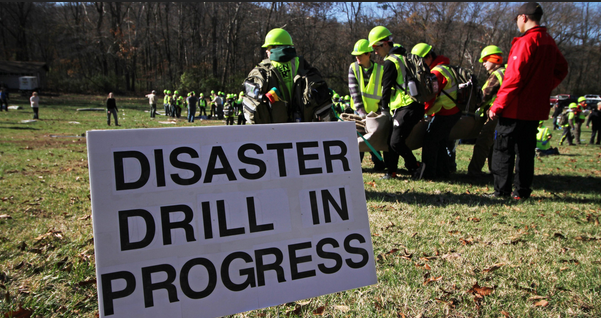Preparedness Courses and Activities
There are many ways to get started in preparedness. These activities and on-line courses may be of interest to someone just getting started, as well as providing training for individuals who have been "prepping" for a while.
Assemble a 72-hour Kit, tailored to your needs, using guidance from Ready.Gov https://www.ready.gov/kit
Assemble a 2-week Emergency Food Supply, tailored to your needs. - https://extension.umn.edu/how-prepare/preparing-2-week-emergency-food-supply
Complete the Cousera Disaster Preparedness Course - https://www.coursera.org/learn/disaster-preparedness
Complete General Backcountry Safety - https://training.mra.org/course/index.php?categoryid=2
Watch Bug Out Bag (FULL FILM VERSION): S1E4 Green Berets No Nonsense Bug Out - https://www.youtube.com/watch?v=mFj_ULMjcNQ
Watch Bugout Bag? What’s Inside and Why? - https://www.youtube.com/watch?v=bN8nmGzwA4k
Complete Neighborhood Emergency Response Planning - https://prod.medicine.utah.edu/rmcoeh/about-us/outreach/cert/online-courses
Complete Red Cross (or equivalent) CPR with AED and Basic First Aid (CPR with AED must be hands-on) First Aid can be on-line (but hands-on is preferred) - https://www.redcross.org/take-a-class/first-aid/first-aid-training/first-aid-online
Watch the YouTube video: What To Do In An Active Shooter Situation - https://www.youtube.com/watch?v=q6R7Z53KkkU
Complete IS-904: Active Shooter Prevention: You Can Make a Difference - https://training.fema.gov/is/courseoverview.aspx?code=IS-904
Complete IS-907: Active Shooter: What You Can Do - https://training.fema.gov/is/courseoverview.aspx?code=is-907
Complete DOD Level 1 Anti-Terrorism Training - https://jko.jten.mil/courses/AT-level1/launch.html
Complete Bomb Threat Preparedness and Response - https://cdp.dhs.gov/training/course/AWR-903
Complete You Are the Help Until Help Arrives - https://community.fema.gov/until-help-arrives
Don't overlook the need for physical activity...
Complete the requirements for the Boy Scout Hiking Merit Badge - http://usscouts.org/mb/mb061.asp
Do the following:
Explain to your counselor (write in your preparedness journal) the most likely hazards you may encounter while hiking, and what you should do to anticipate, help prevent, mitigate, and respond to these hazards.
Show that you know first aid for injuries or illnesses that could occur while hiking, including hypothermia, frostbite, dehydration, heat exhaustion, heatstroke, sunburn, hyperventilation, altitude sickness, sprained ankle, blisters, insect stings, tick bites, and snakebite.
Explain and where possible, show the points of good hiking practices including proper outdoor ethics, hiking safety in the daytime and at night, courtesy to others, choice of footwear, and proper care of feet and footwear.
Explain how hiking is an aerobic activity. Develop a plan for conditioning yourself for 10-mile hikes, and describe how you will increase your fitness for longer hikes.
Take the five following hikes, each on a different day, and each of continuous miles. These hikes MUST be taken in the following order
One 5-mile hike
Three 10-mile hikes
One 15-mile hike
You may stop for as many short rest periods as needed, as well as one meal, during each hike, but not for an extended period (example: overnight). Prepare a written hike plan before each hike and share it with your Scoutmaster or a designee. Include map routes, a clothing and equipment list, and a list of items for a trail lunch.
Take a hike of 20 continuous miles in one day following a hike plan you have prepared. You may stop for as many short rest periods as needed, as well as one meal, but not for an extended period (example: overnight).
After each of the hikes (or during each hike if on one continuous "trek") in requirements 4 and 5, write a short reflection of your experience. Give dates and descriptions of routes covered, the weather, and any interesting things you saw. It may include something you learned about yourself, about the outdoors, or about others you were hiking with.

.png)


Comments
Post a Comment